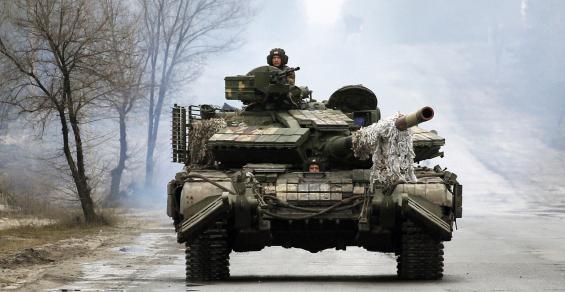Take a closer look at the impact of Russia’s invasion of Ukraine on fuel, fertilizer and grain prices.
It hasn’t even been a week since Russia invaded Ukraine, but the implications for grain and energy prices have already been dramatic. Crude oil rocketed above $100 per barrel for the first time since 2014, and winter wheat prices have soared to the highest levels since 2008, citing two very visible examples.
Uncertainty is the name of the game as the situation unfolds. Red-hot grain prices may leave growers feeling optimistic, but will geopolitical turmoil mean even higher input costs and even more supply chain tangles?
RaboResearch attempted to answer some of those questions on a call with reporters Tuesday morning. A critical starting point is understanding the role of Russian and Ukrainian production in both the agriculture and energy sectors. Both countries have major roles to play in these areas.
“It’s really hard to overstate Russia’s importance on global energy markets,” notes Ryan Fitzmaurice, energy commodity strategist. “Russia produces more than 10 million barrels of crude oil a day and is a top three global supplier.”
Russia is a “meaningful exporter” of not only crude oil, but also gasoline, diesel and natural gas. So who’s most vulnerable during this current escalation?
“Europe is most at risk of a physical supply shock, while the U.S. is more at risk of a sticker price shock,” Fitzmaurice says. “We haven’t seen a supply disruption yet, but that certainly is a risk moving forward.”
Libya’s civil war in 2011 was the last time a price shock occurred on the world market, Fitzmaurice adds. During that event, oil prices moved from $90 per barrel to $125 per barrel in just four months. A similar scenario moving forward wouldn’t be a complete surprise.
Russia is also a major player in the global fertilizer market, notes farm inputs analyst Sam Taylor. The country (with Belarus) accounts for 40% of potash exports. Russia also accounts for 22% of global ammonia exports, 14% of urea exports and 14% of MAP exports.
Related: Live event looks at Ukraine conflict and the supply chain
“The other thing to consider is the stickability of supply chains,” he says. “Urea, being a dry good, has a greater flexibility to be shipped around.”
That’s not as true with ammonia, which travels via pipelines that have been currently shut off.
“That is a market where we see a greater risk of volatility going forward,” Taylor says.
As with energy supplies, the United States may have less exposure than some other geographies. Brazil, in particular, has an “outsized exposure” in comparison and is already scrambling to secure alternatively sourced inputs. Taylor is also closely watching China, which may reenter the trading market for urea and phosphates later this year, which would be a risk mitigant if that comes to pass.
In the meantime: “I would anticipate price volatility and I would imagine there will be a wide spread on some macronutrients as supply chains realign,” Taylor says.
Russia and Ukraine are both major grain exporters. Combined, the two countries account for 29% of global wheat sales, 31% of global barely sales and 19% of global corn sales. Ukrainian ports closed earlier this week and will remain so until the conflict is over. Meantime, Russia will feel the heat from global sanctions, along with rising freight and insurance costs.
“Buyers will have to think about where they’re going to do business,” according to Stephen Nicholson, global grain and oilseed strategist. “We’ve seen ADM and Bunge shut down some operations in Black Sea region. Doing business there has become extremely difficult.”
Other major wheat producers could stand to benefit from the situation, including the United States, South America, Europe and Australia. On the other hand, prices could move high enough that demand starts to contract, Nicholson says.
Production disruptions could also take place in Ukraine and Russia moving forward, Nicholson adds. For example, what will the financing situation look like for Russian farmers as sanctions have already thrown the economy in disarray? And if some Ukrainian farmland turns into battlefields, some of that ground is obviously unavailable for agricultural production, he says.
What will grain prices look like moving forward? Nicholson says it is somewhat analogous to dealing with a drought – prices are likely to be volatile, and the impact of war could ultimately have a long tail, even if the conflict ends up being short-lived.
“How high [will prices move]?” Nicholson asks. “We won’t know that until we will. We won’t know the impact until we get through it.”






